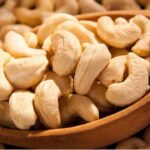
A new study published March 4, 2022, has validated more local plants for the prevention and treatment of kidney diseases. Top on the list is ginger, grape, turmeric, beetroot juice, stinging nettle, onions, apples, tea, papaya, bitter leaf, and guava leaves.
The study titled “Promoting Plant-Based Therapies for Chronic Kidney Disease” was published in the Journal of Evidence-Based Integrative Medicine.
The researchers include Muhammad Ali Khan, Andrew J Kassianos, and Wendy E Hoy.
Chronic kidney disease (CKD) is debilitating, increasing in incidence worldwide, and a financial and social burden on health systems. Kidney failure, the final stage of CKD, is life-threatening if untreated with kidney replacement therapies. Current therapies using commercially-available drugs, such as angiotensin-converting enzyme inhibitors, angiotensin II receptor blockers and calcium channel blockers, generally only delay the progression of CKD.
Plants, algae and fungi have been utilised as natural medicines throughout human history. Medicinal plants are regarded as an acceptable, cheap, easily available and relatively safe source of many active compounds for pharmaceuticals. In China, the use of traditional herbal medicine for kidney disease has shown some advantages over single conventional drug treatment. The beneficial effect of medicinal plants on kidney disease is often derived from their ability to boost the natural antioxidant defence mechanisms in the body. Different types of phytochemicals such as flavonoids, vitamins, resveratrol, anthocyanin, curcumin and phenolic acid are often found in plant-based medicines and may act as antioxidants.
The researchers have identified and validated plants known to be beneficial in CKD and to have minimal adverse outcomes. They said although, by no means restricted to these plants, the benefit has been demonstrated from Rheum spp. (Rhubarb), Astragalus membranaceous (Astragalus), Cordyceps Sinensis (CS), Triptirygium wildfordii (TwHF), Abelmoschus manihot (L.) medic (AM), Salvia miltiorrhiza (SM), Vitis vinifera (Grape), and Zingiber officinale (Ginger). These plants and their extracts are sometimes used alone, but in many countries, they are used in polyherbal for the treatment of kidney disease.
Zingiber officinale (ginger)
Ginger is used widely as a spice but also often in folk medicine. It belongs to the Zingiberaceae family and has been cultivated for thousands of years, especially in China and South Asian countries. Ginger contains many beneficial compounds, the most important of which are 6-, 8-, and 10-gingerol and 6-shogaol. It displays diverse beneficial biological actions due to its potent antioxidant, anti-inflammatory, anti-tumour, anti-diabetic and neuroprotective activities.
In pre-clinical animal models of kidney and cardiovascular diseases, ginger extracts lowered blood glucose levels, restored the total carbohydrates, pyruvate, glycogen and total protein in kidney tissue, promoted the regeneration of tubules and restored glomeruli, and reduced fatty infiltration. One clinical trial of ginger extract in CKD patients on peritoneal dialysis demonstrated that daily administration of 1000 mg ginger reduced serum fasting glucose, a risk factor for diabetes, diabetic nephropathy and cardiovascular disease. There have been no adverse side effects reported when doses are kept to a moderate level.
Some other nephron-protective medicinal plants
There are many other plants reported to have benefits for kidney failure and/or CKD. Rutin (or quercetin) is a flavonoid present in onions, apples, tea and red wine.
This plant extract is readily available “over the counter” and has demonstrated strong antioxidant and anti-inflammatory properties in the heart and liver in a high fat-high carbohydrate diet model of metabolic syndrome in rats.
Rutin also protected the kidney against ischemia-reperfusion injury, cisplatin-induced nephrotoxicity, and diabetic nephropathy. It normalized BUN, thereby modulating a key factor in the pathogenesis of CKD. However, some other studies did not show benefits.
For example, rutin may induce protein-energy malnutrition in CKD. Although there are some promising results, more analyzes are needed to confirm whether, or not, preclinical and clinical benefits exist for this plant extract, particularly in the context of CKD.
Clinically, Glycyrrhiza glabra extracts consistently decreased pre-dialysis serum potassium concentrations in chronic hemodialysis patients. Silybum marianum, known as “milk thistle” or silymarin, is a very safe herb that protects against kidney failure and end-stage diabetic nephropathy. Significant benefits have been claimed for Lespedeza tincture for both AKI and CKD patients.
Clinically, beetroot juice decreased peripheral systolic and diastolic blood pressure, mean arterial pressure, improved kidney function, histological damage and kidney prognosis, and prevented cardiovascular events.
In a recent study, a beetroot protease inhibitor was isolated and characterized. The results showed the potential of such plant protease inhibitors for peptide-based drug discovery against targets involved in diseases such as cancers and immune system-related diseases, such as is seen in CKD in some instances. Coptis rhizome extracts significantly reduced biomarkers of kidney damage, such as urinary albumin-to-creatine ratio, urinary osteopontin and KIM-1, and improved kidney hemodynamics. In addition, clinically, it decreased inflammation and oxidative stress.
Extracts of Urtica dioica, or “stinging nettle”, significantly attenuated kidney damage and tubular atrophy, loss of brush border, hydropic epithelial cell degeneration, glomerular shrinkage, and tubulointerstitial fibrosis, as well as demonstrating clinical benefits in patients undergoing partial nephrectomy or kidney transplantation. The polyherbal named “Sairei-To” significantly decreased urinary protein excretion, hematuria and normalized proteinuria in CKD patients.
A dietary supplementation with curcumin (turmeric) reduced oxidative stress and proteinuria in CKD patients. A combination of Curcuma longa and Boswellia serrata decreased the levels of inflammatory cytokines and ameliorated inflammatory markers in patients with CKD.
Rheum spp. (Rhubarb)
Rhubarb, derived from the root of Rheum spp indigenous to Asia, belongs to the Polygonaceae family. Some species are cultivated for their potential to treat CKD. Rhubarb contains compounds such as saponins, flavonoids, volatile oils, polysaccharides, tannins, stilbene glycosides (resveratrol and piceatannol) and anthraquinone glycosides (physcion, aloe-emodin, chrysophanol, emodin and rhein). The anthraquinone glycosides may have some inherent toxicities, but they can be removed from extracts to produce an effective extract that is nephroprotective. Many clinical and pre-clinical trials have consistently shown that extracts of rhubarb can reduce serum creatinine levels and offset other metabolic dysfunction related to kidney failure.
In CKD therapy, rhubarb increases the excretion of nitrogenous and other waste products through the intestine and ameliorates uremic toxin accumulation, as demonstrated in various pre-clinical animal models of kidney failure. Using a model of diabetic nephropathy in mice, the proposed mechanism was thought to target the gut-kidney axis and trigger protective gut microbiota, rather than being directly nephroprotective.
The two primary active anthraquinones in rhubarb are rhein and emodin. Rhein prevents kidney damage by modulating various signalling pathways. It down-regulates the Wnt/β-catenin signalling pathway, up-regulates Sirtuin 1, decreases EMT that normally leads to fibrosis and ameliorates dyslipidemia. Rhein also improves cell metabolism through modulation of the glucose transporter I, decreasing mesangial cell hypertrophy and glomerulosclerosis.
Emodin reduces glycation of proteins, inhibits the lipopolysaccharide-induced expression of TLR4 and down-regulates pro-inflammatory TNF-α and IL-6 in the damaged kidney. Emodin also decreases mesangial cell proliferation by inhibiting cellular FLICE-like inhibitor protein, TGF-β1 and fibronectin, p38 MAPK, differentiation and maturation of dendritic cells, and increases the number of regulatory T cells.
These results indicate that the active ingredients in rhubarb have multiple mechanisms of action for the treatment of CKD, including regulation of inflammation and the immune response. Most of these reports have used pre-clinical models. Clinically, rhubarb extract alone, or as a polyherbal, was beneficial in CKD patients, delaying CKD progression and decreasing adverse effects of hemodialysis. The most common adverse side effects of rhubarb are nausea, vomiting, diarrhoea, electrolyte disorders and liver toxicity.
Astragalus membranaceus (Astragalus)
Astragalus membranaceus (synonymous name of Astragalus propinquus), belongs to the family Fabaceae and the genus Astragalus, which has more than 3000 species worldwide. The plant is indigenous to the north and eastern regions of China but is grown worldwide and used widely in complementary and alternative medicines. Astragalus contains more than 60 bioactive compounds, including polysaccharides, saponins (astragalosides I–VII), flavonoids, amino acids and trace elements. In vitro and in vivo pre-clinical trials have revealed that Astragalus extract has potent antioxidant and anti-inflammatory effects. Other mechanisms include downregulating angiotensin receptors, inhibiting nitric oxide synthase and TNF-α production, and stimulating vascular endothelial growth factors and the immune system. In addition, the plant extracts from Astragalus can rebalance profibrotic TGF-β/Smad signalling activity and inhibit endoplasmic reticulum stress-induced pathways.
Several pre-clinical CKD models reported that the plant extract, either alone or as a polyherbal, showed anti-fibrotic effects, ameliorated proteinuria, attenuated kidney injury and promoted Renoprotective effects. Wojcikowski et al. performed a pre-clinical trial in rats using the unilateral ureteral obstruction (UUO) model of kidney fibrosis, with or without Astragalus membranaceus and Angelica sinensis (A and A). The ACEi Enalapril was administered in drinking water in some groups. The combined effect of A and A, with or without Enalapril, had anti-fibrotic benefits. Several clinical trials have reported that Astragalus significantly ameliorated CKD by decreasing proteinuria, with a corresponding increase in creatinine clearance, and haemoglobin levels. Astragalus is safe for most of recipients.
However, the plant is known to inhibit CYP3A4 hence it could affect the action of some other drugs that are metabolized by this enzyme.
Cordyceps sinensis (CS)
CS is a fungus that derives its nutrients from the larvae of Lepidoptera. It is endemic to the Tibetan plateau but is produced commercially now. Various bioactive compounds, including amino acids, polysaccharides, organic acids, trace elements, nucleosides, peptides, steroids and other chemical components are present in CS extracts. The ability of CS to ameliorate urinary disorders and edema was described over 2000 years ago in traditional Chinese medicine. In vitro studies with CS demonstrate potent antioxidant capacity. In vivo, glomerular protection via inhibition of mesangial cell proliferation was demonstrated. Treatment with CS also decreased apoptosis and kidney tubular atrophy and enhanced the immune system.
Extensive work has been carried out on CS alone or in combination with other existing drugs, or other plant extracts. Different pre-clinical animal studies have been used to observe the beneficial effect on kidney disease, especially in CKD. In rat models of CKD, CS improved kidney function, reduced cardiovascular and endocrine comorbidities, inhibited oxidative stress, and reduced CKD-triggering metabolites. Clinically, CS extracts significantly reduced the levels of serum creatinine, proteinuria, hematuria, inflammatory cytokines, monocyte chemoattractant protein-1 and TNF-α. Clinical trials of CS, alone or in combination with other medicinal plant extracts or existing drugs, showed significant improvement of kidney function, with reduced levels of serum creatinine, albuminuria, proteinuria, blood urea nitrogen (BUN) and profibrotic TGF-β1, and increased creatinine clearance. There are very limited reports of adverse effects of dietary supplements CS in humans. The most common adverse side effects are nausea, dry mouth and stomach upset.
Tripterygium wilfordii Hook F (TwHF)
TwHF is a member of the Celastraceae family and is native to Eastern and Southern China, Korea, Japan and Taiwan. A stable glycoside named “multi-glycoside of TwHF” (GWT) has been approved by the China State Food and Drug Administration (Z32021007) for the treatment of chronic diseases such as rheumatoid arthritis and glomerulonephritis. In China, GWT has been used extensively for the treatment of proliferative glomerulonephritis for more than three decades. The major active compound of GWT is triptolide. GWT showed several beneficial therapeutic effects via its immunosuppressive, immunomodulatory, anti-inflammatory, antioxidant and antitumor activities.
Pre-clinical studies of CKD have demonstrated that TwHF reduced tubular apoptosis and kidney fibrosis, as well as improved kidney function by inhibiting the TGF-β1/Smad3 signalling pathways. Clinically, GWT in combination with irbesartan reduced excretion of urinary proteins, including urinary connective tissue growth factor and TGF-β1, in diabetic nephropathy patients. In combination with an ARB, podocyte injury was reduced in a similar patient population. However, the use of TwHF extract is limited due to the lack of high-quality clinical trial data. TwHF causes some common adverse side effects, such as stomach upset, diarrhoea, skin rash and changes in skin pigmentation. The other concerning, although reversible, side effects are infertility in men and amenorrhea in women. These adverse side effects limit its usefulness for the treatment of CKD.
Abelmoschus manihot (L.) medic (AM)
AM belongs to the Malvaceae family. It has been used as a traditional medicine for hundreds of years in China, notably for the treatment of CKD. Due to its potential renoprotective properties, the State Food and Drug Administration of China approved the Huangki capsule (HKC, made from AM) as a Class III new drug (GUOYAOZHUNZI Z19990040) for the treatment of chronic glomerulonephritis. The main active components of HKC are total flavonoids extracted from the flowers of AM, sometimes known as Aibika flowers. Recent research considered HKC as an important adjuvant treatment for CKD, especially as a side effect of diabetes, and suggested that HKC is more effective than the ARB losartan in reducing proteinuria.
The beneficial effect of AM or HKC on CKD and other kidney complications relate to potential anti-inflammatory and antioxidant activities, probably via the flavonoids. Several pre-clinical studies in animal models demonstrated that HKC reduced urinary albumin excretion, serum triglycerides, cholesterol levels and podocyte apoptosis. Kidney inflammation and glomerular injury were reduced as evidenced by fewer activated macrophages in glomeruli, reduced TNF-α protein expression in the kidney, and a dampened p38 MAPK signalling pathway. There are limited data on AM (or HKC) as an anti-fibrotic agent in clinical trials. AM alone, or together with other drugs, reduced levels of proteinuria, BUN, serum creatinine, and also decreased oxidative stress. There were no serious adverse effects from taking AM, except mild to moderate gastrointestinal discomfort.
Salvia miltiorrhiza (SM)
SM, commonly known as Danshen, is a perennial plant of the genus Salvia, within the family Lamiaceae. It is native to most Asian countries, including China. The roots and rhizomes of the plant have been widely used in traditional Chinese medicine for thousands of years. More than 100 bioactive compounds have been isolated from this plant and characterized for their structure. SM has been used for the treatment of numerous diseases, including CKD, because of its potent anti-inflammatory and antioxidant properties. The bioactivity of SM extract relates to the presence of phenolics, flavonoids, terpenoids, polysaccharides and other related quinone compounds. For instance, Tanshinone IIA, a di-terpenoid isolated from SM, showed antioxidant benefits by activating the Nrf2 signalling pathway, improving the metabolic profile and exhibiting potent renoprotective effects, and the lipophilic fraction attenuated oxidative stress in diabetic nephropathy.
Pre-clinical trials of SM alone, or in combination with other drugs, reduced albuminuria, improved kidney function, decreased fibrosis and TGF-β/Smad3 signalling, suppressed pro-inflammatory cytokines and adhesion molecules and inhibited apoptosis. SM extracts also ameliorated proteinuria, serum and kidney tissue levels of TGF-β1 and collagen IV, reduced numbers of monocytes/macrophages and exhibited a significant renoprotective effect. Of note, a clinical trial of a polyherbal that contained SM for CKD stabilized the albumin/creatinine ratio, increased haemoglobin content and improved the accumulative survival rate of the test group. No serious adverse side effects of SM have been reported.
Vitis vinifera (grape)
Vitis vinifera, or grape, belongs to the Vitaceae family. Grape seeds contain more than 1600 phytonutrients, including flavonoids, catechin, anthocyanins, flavonols, non-flavonoids and pro-anthocyanidins, and their extracts exhibit enormous biological activity. For this review, one of the most important of biological actions is inhibition of progress in CKD. Grape seed extracts typically act by alleviating oxidative stress and endoplasmic reticulum stress-induced apoptosis. Pre-clinical studies of grape seed extracts in animal models of CKD have also reported improved kidney function, decreased proteinuria and reduced podocyte cell death. Clinical trials have demonstrated that grape seed extracts increased GFR, decreased proteinuria and triglycerides, prevented anemia, and counteracted plasma low-density lipoprotein and thrombocytopenia. There are no known adverse side effects at normal doses of grape seed extracts.
Concerns of Toxicities of Plant-Based Extracts to the Kidney
Natural products are often considered safer than traditional drugs, and many of our modern drugs are derived from herbs. Nonetheless, some researchers are concerned about their safe use. The possible nephrotoxicity and other chronic or insidious health disorders of using popular complementary and alternative medicine in different countries are not properly reported.
The most well-known toxicity or side-effect is associated with traditional Chinese herbal medicine that uses aristolochic acid and induces aristolochic acid nephropathy (AAN). The clinical features of AAN are characterized by extensive interstitial fibrosis and tubular atrophy in the kidney without obvious glomerular injury. Prolonged use causes uroepithelial malignancies.
In addition, traditional herbal remedies have been implicated in 35 per cent of all cases of AKI in Africa. The Therapeutic Goods Administration restricted the use of ephedra in Australia due to its potentially toxic effects (quickened heartbeat and elevated blood pressure, heart palpitations, nausea and vomiting). Some herbal drugs that contain specific herbs, nuts and mushrooms may also be associated with inherent nephrotoxicity. Interestingly, the inherent properties of the herbs are not the only source of herb-associated kidney disorders.
Herb-drug interactions, mistakes in dosage and identification, contaminants within mixtures, adulteration with heavy metals, and even deliberate adulteration with non-labelled plant extracts are all issues of concern. However, with proper identification, rigorous pre-clinical and clinical trials, strict controls on the presence of adulterants within herbal medicines, labelling of dosages and contraindications, and robust manufacturing techniques, the safety of those consuming herbal medicines should be maintained.
The researchers concluded: “There is no doubt that medicinal plants present a largely untapped source of new CKD therapies. Clinical and pre-clinical trials of plant extracts sometimes demonstrate benefit but some research has also demonstrated that plant extracts may produce chronic organ dysfunction when used for the long term due to the presence of harmful chemicals. Therefore, the aim of recent research is to identify, rigorously test pre-clinically and clinically, and avoid such toxic outcomes in order to obtain optimal therapeutic benefit from medicinal plants. This review may prove to be a filtering tool to researchers into complementary and alternative medicines to find out the current trends of using medicinal plants and plant extracts for the treatment of kidney diseases, including CKD.”













